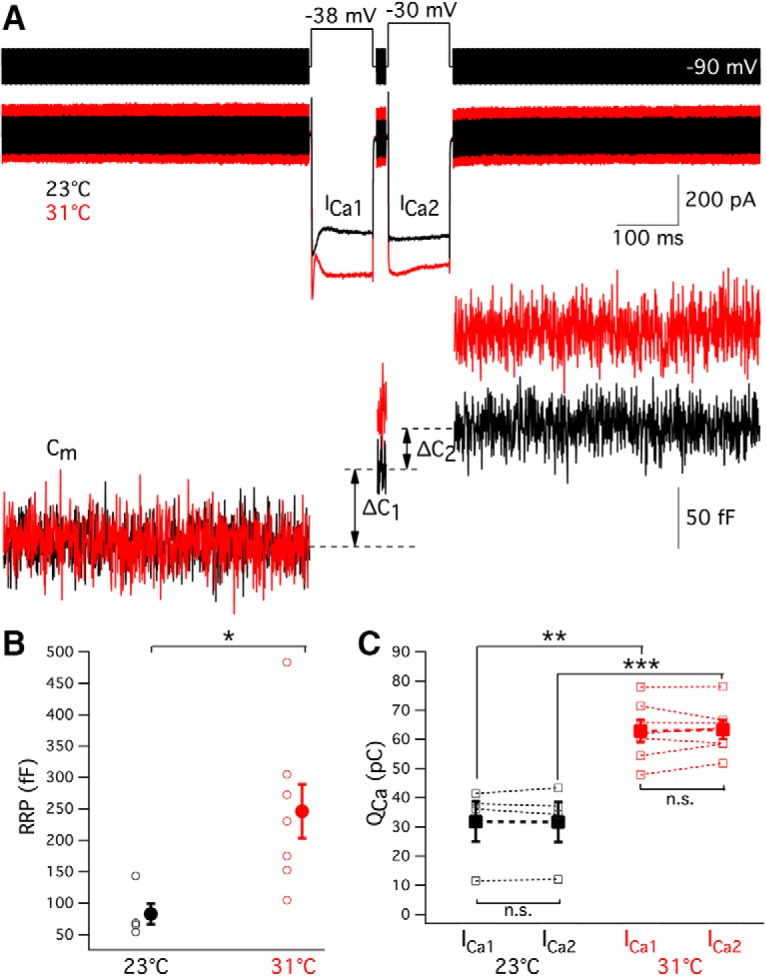Figure 10.

The RRP of vesicles is larger at high temperature. A, The paired pulse protocol used to calculate the maximum size of the RRP was composed of two 100 ms pulses with a 25 ms interval. The second pulse was depolarized to −30 mV. The first pulse was adjusted to give the same total amount of Ca2+ influx (QCa) as the second pulse. It was different from cell to cell. In this example, the first depolarizing potential was −38 mV. The intervals between pulse pairs was 60–90 s to allow for full recovery. Ca2+ current recorded at 23°C and 31°C is shown in black and red, respectively. ΔC1 and ΔC2 are capacitance jumps triggered by the first and second depolarization, respectively. B, The maximum size of the RRP was calculated according to Bmax = . The value of Bmax increased significantly from ∼83 fF (n = 4) at 23°C to 246 fF at 31°C (n = 7, p = 0.0351, unpaired t test). C, The Ca2+ influx during the first and second depolarizing pulses was 31.8 ± 6.8 pC and 31.7 ± 6.8 pC at room temperature (n = 4, p = 0.93), whereas the Ca2+ influx during the first and second pulses was 62.8 ± 3.8 pC and 63.3 ± 3.1 pC at high temperature (n = 7, p = 0.69). Both the first (p = 0.0005, unpaired t test) and the second (p = 0.0002, unpaired t test) pulses thus triggered more Ca2+ influx at high temperature. *p < 0.05, **p < 0.01, ***p < 0.001.
